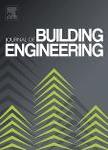版权所有:内蒙古大学图书馆 技术提供:维普资讯• 智图
内蒙古自治区呼和浩特市赛罕区大学西街235号 邮编: 010021

作者机构:North China Univ Technol Sch Civil Engn Beijing 100144 Peoples R China China Commun Informat Technol Grp Co Ltd Beijing 100088 Peoples R China
出 版 物:《JOURNAL OF BUILDING ENGINEERING》 (J. Build. Eng.)
年 卷 期:2024年第89卷
核心收录:
基 金:National Key R & D Program of China [2022YFC3002300]
主 题:BIM Component spatial relation network Clash resolution Multi-objective optimization NSGA-II
摘 要:With the wide application of building information modelling (BIM) in the Architectural, Engineering, and Construction (AEC) industry, holistic approaches based on the network theory to improve clash detection and resolution processes have received increasing attention. The previous studies using holistic approaches in the clash resolution mainly focus on single objective optimization. However, in engineering practice of BIM-based clash resolution, finding optimal solutions for a single-objective that meet the project s requirements is challenging. Moreover, optimization objectives need to be appropriately balanced because these objectives tend to conflict with each other, which leads to a typical multi-objective optimization problem. In this paper, by taking minimum number and minimum moving distance of components to be changed as optimization objectives, a second-generation non-dominated sorting genetic algorithm (NSGAII) approach to solve the multi-objective optimization problem is proposed based on component spatial relation network. Clash solutions are automatically generated under the spatial movement constraints and system priority constraints for clash components. The proposed method is validated by clash resolution of an underground parking lot in a residential project, and the results show that clash solutions generated by the proposed method is practical and acceptable. The proposed method is promising in facilitating the practical application of BIM-based automatic clash resolution.